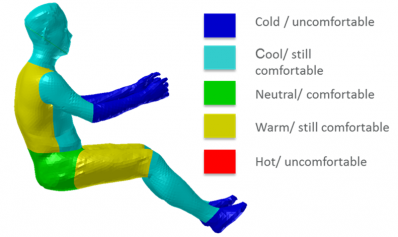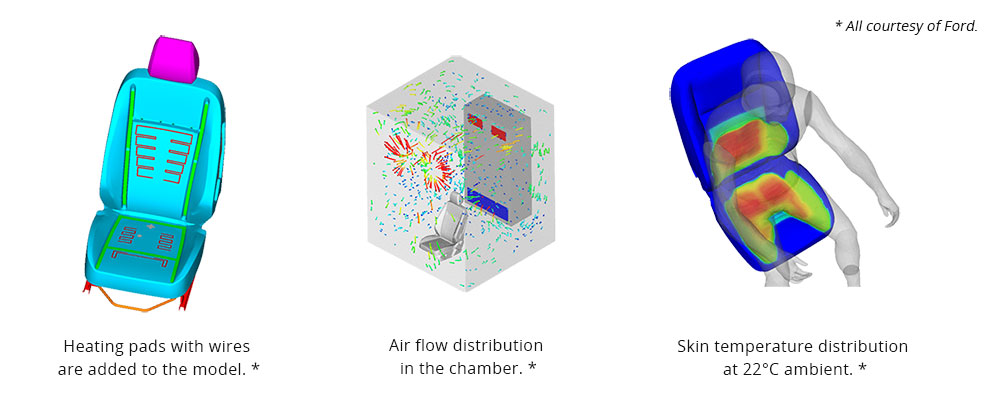
The design of heated or cooled seats, as well as their optimization to effectively increase the thermal comfort of the occupant, is very complex. The use of virtual seat prototyping to predict the thermal comfort of a driver seated in a heated or cooled seat enables one to answer effectively such a car interior design challenge.
By taking into account the right interactions between occupant and seat, and the accurate material conductivities affected by foam compression, ESI Virtual Seat Solution (VSS) can predict the thermal behavior of heated, cooled or ventilated seats, as well as the impact on occupant thermal comfort.

Human models embedded in Virtual Seat solution include human thermal modeling and thermal comfort criteria, which is needed to evaluate the effect of heated seat on human comfort. Read more on human model.
Virtual testing of an occupied heated or ventilated seat is possible and easy with the use of a single core model of the seat for the different simulations steps.

We upgraded the seat model to include thermal properties. We obtained a seat model able to predict human pressure distribution and human thermal comfort.
Reference: Ford Publication IQPC 2012
Read More: Thermal Comfort technical paper presented at the 2017 1st International Comfort Congress.